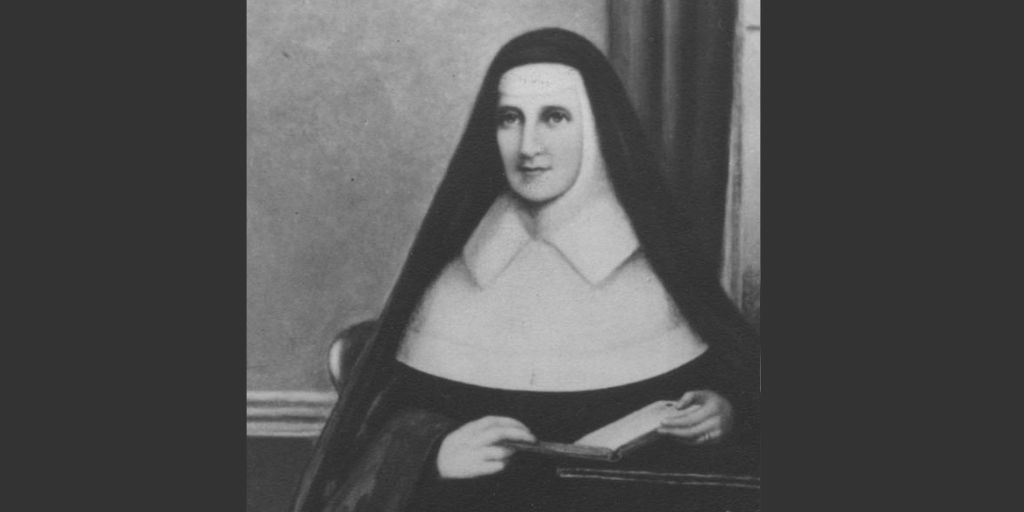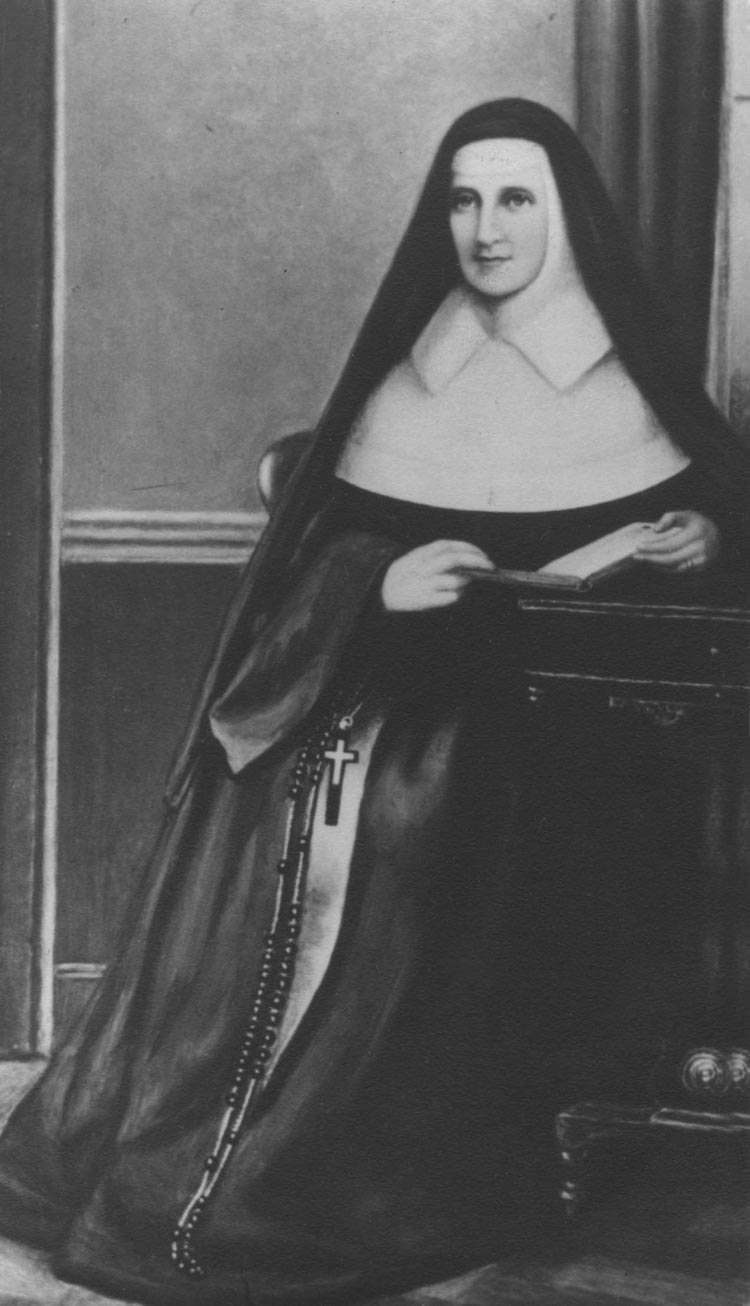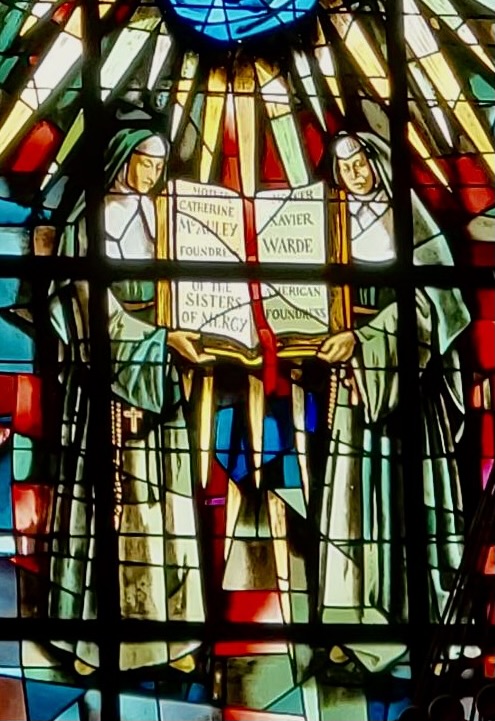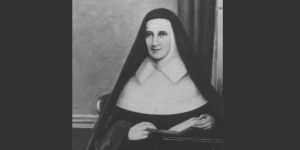
“Do not put your trust in any human being, but place all your confidence in God.” – Ven. Catherine McAuley
Much of Catherine Elizabeth McAuley’s life was marked by tragedy and hardship. She knew what it was to endure loss and penury – to dwell amongst people who criticized her. Yet out of the many sorrows she suffered, God created opportunities for good.

Known as the founder of the Sisters of Mercy, Catherine McAuley understood what it meant to trust in the Lord throughout all circumstances. As we celebrate the anniversary of her birthday this week, discover how this humble girl from Dublin grew up to be a global philanthropist.
Early Life
Catherine was born in Dublin, Ireland, on September 29, 1778. Unfortunately, her father died when she was just a child, and when she was about 20, her mother also passed away. Throughout her young life, she stayed with relatives and friends in various situations until taking a role as a companion and housekeeper to a wealthy couple known as William and Catherine Callaghan.
Life with the Callaghans
Under the Callaghans’ care, Catherine had the freedom to pursue a variety of philanthropic endeavors, whether she was providing spiritual teaching to servants and underprivileged children, or teaching young women needlework so they could make a living. A deep bond formed between the Callaghans and Catherine, whom they held as dear as a daughter. Though the Callaghans were Protestant, by the end of her life, Mrs. Callaghan converted to Catholicism thanks to Catherine’s influence. The Callaghans’ affection for Catherine was so great that they designated her as their sole heir, and at age 35, she lay claim to a large fortune and estate.
The Inheritance and the House of Mercy
This inheritance would serve as the financial basis of Catherine’s ministry aspirations. Catherine used her new resources to build a house in Dublin that would serve the underprivileged – complete with a school, a dormitory, a shelter, a church, and a site for job training. Tragically, her sister died just before the opening of this “House of Mercy” in 1827, which complicated arrangements. During this time, Catherine spent half her hours at the House of Mercy overseeing operations, and half at her brother-in-law’s home to help with the children her sister had left behind.
In the years that followed, Catherine faced a number of new challenges. When her brother-in-law died suddenly, she was left as the sole guardian of a total of nine children. Additionally, her choice to operate the House of Mercy outside of any religious order began to earn her criticism from the community and church authorities. Founding a religious congregation had never been her intention, but at the archbishop’s request, she agreed to make the House of Mercy into an official religious institute.
The Founding of the Sisters of Mercy

Called the Sisters of Mercy, the order was officially founded on December 12, 1831, when Catherine made her vows alongside two women named Mary Ann Doyle and Mary Elizabeth Harley. Under Catherine’s guidance as mother superior, the house expanded to serve not only as a shelter for young women, but as a school for hundreds of girls. Unlike other religious orders at the time, the Sisters of Mercy were not bound by any rules of enclosure – something Catherine felt strongly about. Their practice of walking the streets to carry out acts of service earned them the name “the Walking Sisters.”
Over the next decade, the work of the sisters spread across Ireland and beyond, and by 1841, Pope Gregory XVI had given approval to the rule and constitution of the Sisters of Mercy. But as her order continued to grow, so did Catherine’s responsibilities. She made long journeys by stagecoach, canal boat, and railway so that she could visit each fledgling convent under her order in their early stages, no matter what discomfort it entailed. She is said to have once remarked:
“God knows I would rather be cold and hungry than that the poor in Kingstown or elsewhere should be deprived of any consolation in our power to afford.”
Catherine’s Final Days
Sadly, it was upon her return to Dublin after one such visit that her health severely suffered. She contracted tuberculosis, and on November 11, 1841, she passed away. In the years that followed, the Sisters of Mercy continued to expand to Australia, Argentina, the United States, and other countries, becoming “one of the largest English-speaking religious congregations.” Today, there are an estimated 7,000+ members of the Sisters of Mercy working across the globe to “establis[h] countless schools, hospitals, and other institutions offering social services.”
In 1978, the cause for Catherine’s canonization was opened, and in 1990, she was declared Venerable by Pope John Paul II. Today at the Basilica, you can find Catherine portrayed in the Our Lady of Mercy Window and honored in a tablet in Memorial Hall.
Sources:
“About Catherine McAuley,” Catherine McAuley College.
“Catherine Elizabeth McAuley,” Britannica.
“Catherine McAuley,” by Adrienne Kennedy, EBSCO.
“Introducing Catherine McAuley,” Mercy International Association.
“Our Foundress: Catherine McAuley,” Institute of Sisters of Mercy of Australia and Papua New Guinea.
“Our History,” The Religious Sisters of Mercy of Alma, Michigan Website.
Banner image features a daguerreotype with Venerable Catherine McAuley, circa 1840. Public Doman.


